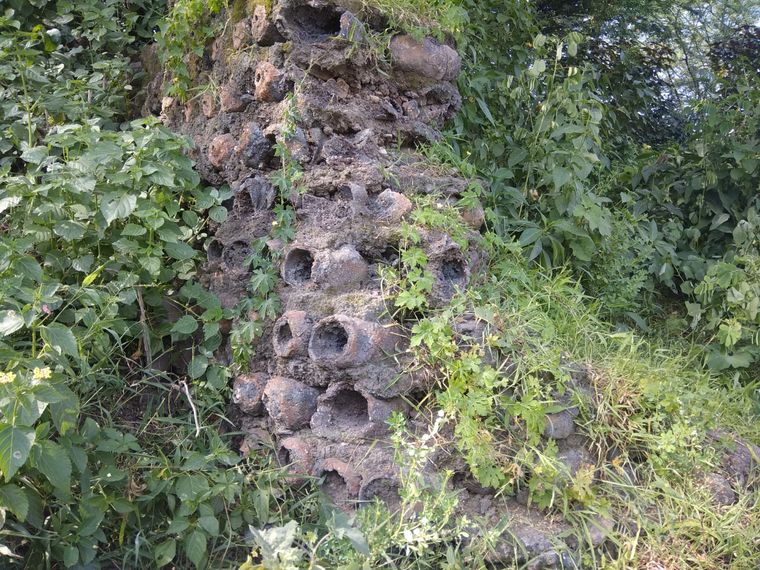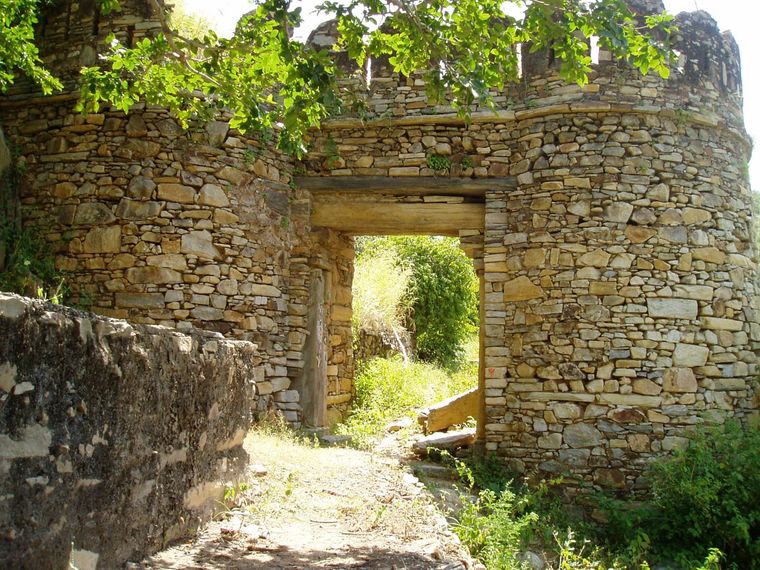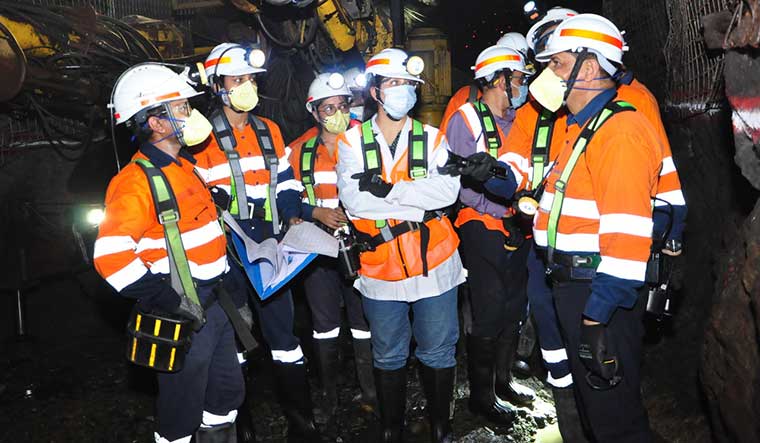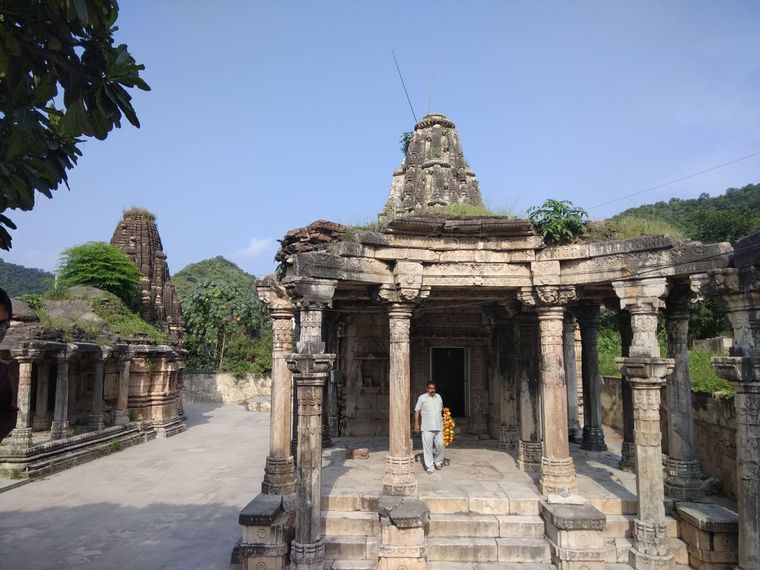Guest Column- The author is joint secretary in the ministry of coal and mines.
The best part about being a generalist in administration is the varied exposure one gets. When I moved from the ministry of culture to the ministry of coal and mines, I thought I had bid goodbye to heritage for a while. So imagine my surprise when work took me to a functioning mine which has global geo-heritage tags.
It is the story of a lost city, a once-bustling centre of trade and pilgrimage, a prosperous mining region known for its magnificent silver jewellery, and a 2,500-year-old smelting technique which was lost to the world, a technique re-discovered by an Englishman in the 18th century.
Recognition came rather late. In 1988, the American Society of Metals (ASM International) recognised Zawar Mine as an ‘International Historical Landmark’. The Geological Society of India recognised Zawar as a National Geological Monument/ Geo-heritage site in 2016.
The ASM plaque reads: “At this site are preserved the zinc retort distillation furnaces and remnants of related operations. The village artifacts together with temple ruins attest to the success of this metallurgical technology. This operation first supplied the brass for fine instrument making in Europe, a forerunner of the industrial revolution.”
Zawar is in the south of Udaipur in Rajasthan and is also called Jawar. It is said it got its name from the Urdu word jawaharat or jewellery, as it was a flourishing centre for export of silver in the 13th century CE. Zawar was also an important pilgrimage centre in the medieval era, and the hills are dotted with the ruins of a hundred Jain and Hindu temples.
Wrote the poet Somakirti in 1461 about Zawar being a famous centre of pilgrimage and metal trade:
Jawur naam prasiddhje, tehna vishma khoh
Tihaa avi munivar raha, moonh ki saghla moh.
The first reference in a Persian text to zinc mined in India occurs in Abul Fazal’s Ain-i Akbari, mainly compiled in 1595. He says: “Zinc (jast) is deemed by some to be similar to mercury, by others to lead. Nothing about it is mentioned in scientific texts. It is mined near Jawar in the province of Ajmer.”
The administrator Munhta Nainsi, writing around 1657, mentions that the Jawar mine yielded silver worth Rs400 to Rs500 per day, a big sum in those days.
The British metallurgist William Champion patented a process in 1738 to distill zinc metal from calamine, using charcoal in a smelter. This process remained in use for more than 100 years. What Champion patented was essentially the same process of high temperature distillation and condensation that had been in use in Zawar since the first century AD.
RETORTS, THE UNIQUE REVERSE DISTILLATION METHOD OF ZAWAR
Zinc occurs as a metallic element in nature, but can be obtained in pure form only by smelting ores that contain zinc. Extracting metallic zinc from ores posed a serious challenge to traditional metallurgy. Accidental melting of zinc ore in an open fire could never produce metallic zinc, unlike lead or tin.
Zinc has a boiling point of 906°C. Therefore, it would be in gaseous form at the temperature required to reduce its oxide to metal (950°C-1100°C). In an open fire or furnace, unless the vapours are trapped by means of condensation equipment, converting the vapours in the course of cooling into metallic zinc, they will combine with carbon dioxide in the furnace and form zinc oxide. Therefore, procedures for obtaining metallic zinc appeared quite late in China, as elsewhere in the world.
The oldest distillation apparatus, found through excavation, was reported from Mesopotamia in the 3rd millennium BCE; they probably used this apparatus for preparation of perfumes, says Paul T. Craddock. As far as India is concerned, distillation process may have been used for preparation of alcohol such as sura, soma, madhya, etc; the oldest text which refers to soma is the Rig Veda, which dates back to the 1500-1000 BCE. The distillation process therefore seems to have been known to Indians since ancient times.
Retorts are inverted clay pots used for distillation of zinc and are unique to Zawar. Said to have been invented by Bhil tribals who were the original inhabitants of the region, retorts were coated on the inside with condiments such as turmeric. Retorts were cylindrical with one end open, and were about 30cm long and 1cm thick with an internal diameter of 10cm.
After being charged with previously roasted ore together with charcoal and other ingredients, the clay cone-condensers were sealed at the open end. A batch of 36 such retorts was then placed in the furnace to rest on perforated clay plate with their necks protruding through the holes into a cooler chamber below the main furnace. On heating the furnace to 1000ºC-1150ºC, the zinc vapours permeated to the cooler region of the neck, where the metal liquefied and flowed into collecting vessels.
Used retorts were utilised as building materials by local people. Walls made of clay retorts are found even today all over Zawar, a fine example of sustainable mining and metallurgy practices which modern industry would do well to emulate.
Zinc was produced on a commercial scale in Zawar since the ninth century CE. Historians believe that a large number of Chinese monks, who visited India to study Buddhism, took back with them knowledge of medicine, astronomy, zinc and brass technology and alchemy. Scholars like Alfred Bonnin (1924) and Paul T. Craddock (1990) have established that prior to 16th century, zinc was an unknown metal in China. And it is also possible that metallic zinc reached China through the Portuguese (Craddock,1990), which is indicated by the remarks of Marco Polo.
In the 16th century, China started exporting zinc to Europe under the name “tutenag”which is alien to Chinese language. Scholars are divided over whether this word is of Persian or Sanskrit origin. Bonnin draws the following conclusion:
“The base of the word is no doubt the Persian Tutiya, Sanskrit Tutha, an oxide of zinc generally in India applied to blue vitriol or sulphate of copper.”
Zinc was called by similar names in the Deccan India: tutti-naga in Marathi, tuttunagam in Tamil and tuttunagamu in Telugu. Tuttha was used in the Rasa-ratna-samuchchya, a well-known alchemical text from the 14th century CE.
India had a flourishing trade with Persia. Literature reveals that Indian brass cups were found in the court of the Persian king Darius I (who invaded the Indus Valley area around 515 BCE). Therefore, it is likely that the name Tutiya/tutha/tuthanaga/tutenag originated in India and travelled to Persia and later China.
Thus it can be safely presumed that zinc was first produced commercially and exported from Zawar to the rest of the world, and only much later from China to Europe. Several reasons are ascribed to the decline of mining and smelting of zinc in Zawar.
By 1812, mining and smelting activities had almost completely ceased in Zawar. The four major reasons seem to be:
Political instability. The invasion by Alauddin Khilji in 1301-1303, followed by a series of expeditions by rulers of Malwa and Gujarat and the Mughals, broke the back of the mining and smelting industry in Zawar, which had been largely insulated earlier.The Marathas, who were called upon by the rulers of Mewar to resist the Mughals, ended up ruining the economy by draining the treasury through payment of massive tributes.
Decline in demand. William Champion’s discovery of distillation of zinc from calamine in 1730s, coupled with Chinese exports to Europe, seems to have resulted in the end of Zawar’s monopoly in zinc trade.
Famine. From the 17th to 19th century, Mewar had to face brutal famines because of continuous drought-like conditions. The region was fully dependent on rainwater, which fed its rivers. Mining activities required a lot of water, and when crops failed for lack of rains, starving families were forced to move to nearby regions of Rajasthan.
Increasing depth of underground mines. All mines have a finite life cycle. Because of limitations of techniques in use in medieval era, it became impossible to dewater the mines, or to continue mining beyond a certain depth. With poor ventilation and lighting and no safety measures in place, a whole lot of mines in Zawar had to be abandoned as they could no longer be safely mined by humans.
Although all mines of Zawar had completely stopped production by 1812,the glorious past of Zawar mines attracted miners as well as British officers. In 1818, a treaty was signed between officers of the British Crown and Maharana Bhim Singh of Mewar. Gradually, efforts for reviving the mines gained momentum. Despite favourable reports from various officers including those working for the Geological Survey of India, it wasn’t until World War II that pressure was mounted on the GSI to seek ways to revive the zinc mines, so as to ease the balance of payments situation of the Crown.
On the basis of a report submitted by C.S. Fox of the GSI, in 1942, the Mewar government withdrew the exploration licence issued earlier to Mewar Mineral Company (MMC) of Udaipur and handed the mines over to Government of India. In 1945, the government of India handed over the assets to Mewar after carrying out exploratory activities, for a sum of Rs3,75,000, and in the same year, the mines were handed over to public sector Metal Corporation of India Ltd (MCIL).
In 1965, the government nationalised the industry, and Hindustan Zinc Limited took over the mines. Vedanta (earlier Sterlite) is majority shareholder (64.92 per cent) in HZL since 2003 and operates four mines in the Zawar area, namely Mochia, Balaria, Zawar Mala and Baroi. Mining is done underground, and the main products are lead and zinc concentrate.
NATIVE SILVER OF ZAWAR
Early silver mining at Zawar was done through handpicking or through using hammer or chisel, as was the case elsewhere in the world (Arizona, Colorado, Australia, Siberia). Broken up with antler tools, native/pure silver was handpicked; alternatively ore was crushed and smelted in clay crucibles. Ancient miners did not have bellows; therefore, the high temperature required for smelting was usually provided by several people blowing into the fire through tubes. Charcoal was used for fuel, where available.
Thanks to the booming economy, Zawar became an important pilgrimage centre and it is believed that there existed 300 Jain and Hindu temples in the area (History of Zawar: Temple architecture and zinc smelting, Dr Arvind Kumar).
The mythological demon king Hiranyakashyap, who was killed by Lord Vishnu in his Narasimha avatar, is said to have ruled in these hills of Zawar; there are ruins of a fort in Zawar known by his name. On the day of my visit, I was mesmerised to hear a group of local women singing songs in praise of the demon king as they came down the hill, past a cluster of Jain temples, and all the way down to Zawarmata temple on the banks of the Tidi river. It is the most revered temple in the region.
Zawarmata, the reigning deity of Zawar, is an avatar of the goddess Durga (Mahishasura Mardini). The temple was possibly renovated extensively in the 16th century. To this day, important festivals such as the Navratras are marked with ritualistic sacrifice of animals such as goats.
Whether you are a believer, an atheist or an agnostic, you cannot but be moved by the deep love and respect the local people have for the deity. It is customary to pray to Zawarmata on every visit to Zawar, and I prayed to the goddess to protect all the miners, their families and local people whose livelihood has been deeply linked to mining activity for two millennia.
Another important temple in Zawar, the Ramanath or Ramaswamy temple, is dedicated to Lord Vishnu. It has a kund (tank) inside the precincts of the temple. A Sanskrit inscription on black stone, which was penned by the poet Maheshwar Dashora in the reign of Maharana Kumbha, describes the beautiful temple and kund. After customary verses in praise of Lord Ganesha and Goddess Saraswati, it eulogises Ramabai, daughter of Maharana Kumbha and wife of Shri Mandalik, king of Girnar, Gujarat, for constructing the temple and tank.
My journey ended on the other side of Udaipur, in the SK (Rajpura-Dariba) mines. According to executives of Hindustan Zinc Ltd, Dariba has one of the most modern mines in the world. It is in one such mine that I was driven one kilometre under the earth’s surface, by possibly India’s first certified female underground metal mine driver, Sakshi Gupta.
Sakshi, drilling engineer at SK mines, is one of the pioneering Indian woman miners who are storming what was hitherto a strictly male bastion—underground mining. Had I visited the same mine two years earlier, I would have probably been the only woman underground at that point. The law forbade women from working in underground mines until 2019, when the Mines Act, 1952, was amended.
Now the owner of a mine may deploy women between 7pm and 6am in any mine above ground. In the case of underground mines, women can be deployed between 7pm and 6am in technical, supervisory and managerial work where continuous presence may not be required. This change in the law is encouraging more women to take up mining engineering as their major subject at graduation level and beyond.
I had also met Sandhya Rasakatla, underground mining manager at Zawar mines. According to the operations head of Zawar Mines, the mines had seen a dramatic improvement in work culture since Sandhya, reportedly India’s first female underground mine manager, had joined.
Zawar has a lesson for all of us. Many dynasties ruled over Mewar; they came, they saw, they plundered. These mighty kingdoms didn’t last, but the scientific, technical, geological as well as spiritual legacy of Zawar cannot be obliterated.
My journey left me richer. I carried back unique treasures—two priceless pieces of our heritage. A piece of Galena rock with a sprinkling of native silver, and 2000-year-old artefact (clay distillation retort), both of which I hope will occupy pride of place in a science museum soon. What was even more precious, however, was my making the acquaintance of the jewels in the crown of mining industry in India, our trailblazing miner girls. Zawarmata would have been pleased.







